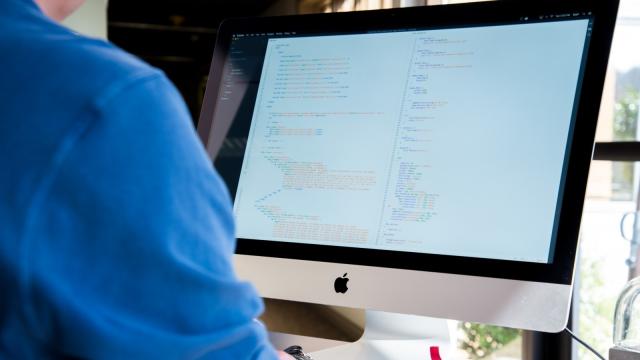It’s been a long time since Apple could claim its computers were really virus-free. Even mighty Mac owners have to keep an eye out for the latest vulnerabilities and malware, just like everyone else, and there’s some new malicious Mac software making the rounds that you should know about.
Photo: Visual Hunt
Spotted by Reddit user BackwardsBinary, “mshelper” is malware that’s designed to hog your Mac’s resources, causing your battery life to plummet (and your laptop to likely get a little warmer and louder). It’s unclear where this malicious code came from or what it’s doing, but one popular theory is that it’s cryptojacking software designed to mine cryptocurrency on your computer without your knowledge. Yuck.
[referenced url=”https://www.lifehacker.com.au/2018/01/protect-yourself-from-cryptojacking-withoperas-ad-blocker/” thumb=”https://i.kinja-img.com/gawker-media/image/upload/t_ku-large/m5sxlstwsovf9ikaebqn.jpg” title=”Protect Yourself From Cryptojacking With Opera’s Ad Blocker” excerpt=”The rise of cryptocurrencies has made a lot of people rich, but it’s also helped create a new breed of hackers and scammers determined to take advantage of the technology.”]
Cryptojacking can push your processor to overwork itself, potentially causing permanent damage to your computer or mobile device. So, if that’s what we’re dealing with, you’ll want to clean up your Mac as soon as possible. Thankfully, it’s pretty easy to identify and eradicate mshelper.
The first thing you’ll want to do is confirm whether mshelper is installed on your Mac. To find out, open Activity Monitor and click on the CPU tab. You should see a list of all the apps and software running on your computer. Make sure they’re organised by the amount of resources they’re using (% CPU).
If it’s present, mshelper should show up at the top of the list. If it doesn’t show up, you can also reorder the list by name alphabetically to double-check that it’s really not there.
[referenced url=”https://www.lifehacker.com.au/2018/02/how-mac-apps-can-spy-on-your-computer/” thumb=”https://i.kinja-img.com/gawker-media/image/upload/t_ku-large/sgolqw0fsamv65gxwdy1.jpg” title=”How Mac Apps Can Spy On Your Computer ” excerpt=”Mac. Apple used to boast that its Mac computers were a virus-free utopia, but that was before hackers and criminals decided to focus their efforts on the operating system. Now, your Mac is just as vulnerable to viruses as any Windows PC, and a new report reveals that hackers can get access to your computer through an entryway that you might think would be better protected. The Mac App Store.”]
If you do find the malware on your Mac, you’ll have to go in and delete a few files on your system to remove it. Open Macintosh HD (if you can’t find it, just do a Spotlight search). Then, head to Library, click on LaunchDaemons, find the file labelled “com.pplauncher.plist,” and delete it.
Next, head back to Library, click on Application Support, and delete the file labelled “pplauncher.” Finally, restart your Mac.
With that out of the way, you should be safe from the latest Mac malware. Just be careful not to download any suspicious files in the future so you can avoid whatever terrible software comes next.

Comments